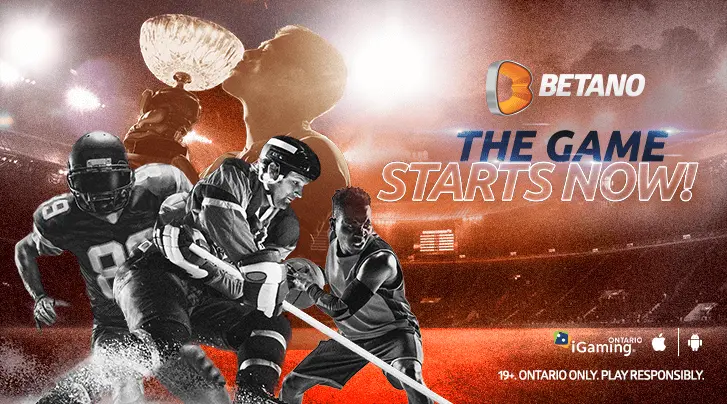If the advanced stats say you’re bad…can you still win a Stanley Cup?

Building a contender at the NHL Trade Deadline isn’t as simple as checking off a shopping list of must-have ingredients for a Stanley Cup recipe.
But what if it was?
Over the past few years at Daily Faceoff, using the previous 10 NHL seasons as my case-study subjects, I developed a list of traits that were most common among the Stanley Cup winners. I came up with seven. And voila, the Stanley Cup ingredients series was born.
So far, we’ve explored the correlation factor of average team weight, having at least one top-10 scorer and having a top-10 goaltender. Next up, we dust off the spreadsheets, sTOp WatCHinG thE GaMEs and explore the link between 5-on-5 expected goal differential and winning the Stanley Cup. In previous editions of Stanley Cup Ingredients, I used shot attempt share at the statistic of focus, but since expected goal differential can factor in quality of chances for and against, it’s arguably a more accurate team stat.
Stanley Cup Ingredient #4: Expected goal differential
Last year, we established a reasonably strong correlation between shot attempt share, or Corsi For percentage, and winning the Stanley Cup. It made sense; if you’re attempting more shots, you have the puck more, so, chances are, you’re a dominant team. But we’ll drill deeper this time. Expected goals project how many goals a team should score based on the quality and quantity of chances they generate. Expected goals against project how many a team should surrender based on the quality and quantity of chances they allow. The differential factors in the gap, for better or worse, between what they generate and what they give up.
How have the past 10 Stanley Cup champs fared against their competition in 5-on-5 expected goal differential during the regular season? Here’s a look with the advanced stats courtesy of moneypuck.com.
| Season | Champion | xG differential |
| 2013-14 | Los Angeles | 31.87 (3rd) |
| 2014-15 | Chicago | 4.99 (16th) |
| 2015-16 | Pittsburgh | 29.21 (2nd) |
| 2016-17 | Pittsburgh | 14.70 (5th) |
| 2017-18 | Washington | -19.86 (26th) |
| 2018-19 | St. Louis | 22.56 (5th) |
| 2019-20 | Tampa Bay | 21.68 (3rd) |
| 2020-21 | Tampa Bay | 8.48 (11th) |
| 2021-22 | Colorado | 16.72 (10th) |
| 2022-23 | Vegas | 16.02 (12th) |
Stanley Cup correlation: STRONG
There is a clear link between controlling the quality of chances at both ends of the ice and building a Stanley Cup winner. Eight of the past 10 champions ranked in the top half of the league in 5-on-5 expected goal differential, and five sat in the top five. Only one champ, the 2017-18 Capitals, owned a negative expected goal differential. That said, none of the past three winners slipped inside the top 10. It appears it’s important to have a positive differential but not necessarily a dominant one.
How teams achieve that differential can vary, too. The 2014-15 Blackhawks and 2016-17 Penguins, for instance, were below average defensively but ranked near the top of the league in expected goals for. The 2018-19 Blues were 11th in expected goals for but 2nd in expected goals against.
Through March 12’s action, which teams this season have the best differential between their expected goals for and against and, in theory, the most encouraging indicators for continued strong play going forward?
2023-24 NHL leaders, 5-on-5 expected goal differential
1. Edmonton Oilers, 46.50
2. Carolina Hurricanes, 29.89
3. Los Angeles Kings, 24.21
4. Florida Panthers, 23.46
5. New Jersey Devils, 18.08
6. Dallas Stars, 17.05
7. Colorado Avalanche, 10.26
8. Pittsburgh Penguins, 10.04
9. Winnipeg Jets, 9.79
10. Seattle Kraken, 8.51
We get seven projected playoff teams in the top 10. Could a rematch of the 2006 Stanley Cup Final be possible, with the Oilers and Hurricanes clashing? The snakebitten New Jersey Devils, who couldn’t get a save all season and allowed far more goals than they should have, show us here why we can expect them to bounce back significantly next season.
Two teams in the playoff hunt with negative differentials in expected goals: the New York Rangers and Detroit Red Wings. The Rangers, relying a lot on stellar goaltender Igor Shesterkin, could have the makings of a paper tiger in the playoffs if they don’t clean up their defensive play. Meanwhile, the regression has already hit the Red Wings like a sledgehammer.
Previous instalments of Stanley Cup Ingredients 2024
Team Weight
Top-10 Scorer(s)
Top-10 Goaltender
Next up: Penalty Killing Efficiency
_____

Discover Betano.ca – a premium Sports Betting and Online Casino experience. Offering numerous unique and dynamic betting options along with diverse digital and live casino games, Betano is where The Game Starts Now. 19+. Please play responsibly.
_____
Recently by Matt Larkin
- More often than not, you need a superstar scorer to win a Stanley Cup
- For Stanley Cup contenders, the beefier the better
- 2024 NHL Trade Deadline Winners and Losers: Long live the Golden Knights’ evil empire
- ‘I love him to death.’ Trade to Sabres reunites Bowen Byram with close friends Cozens, Krebs
- As the Pittsburgh Penguins’ ship sinks, don’t expect Sidney Crosby to abandon it
More from Matt Larkin
- 2026 Olympics: Final Team USA roster projections
- 2026 Olympics: Final Team Canada roster projections
- This Week in the NHL: Skinner, Jarry immediately get to face old teams
- Whom should Canada choose for its goalie trio at the 2026 Olympics?
- 10 staggering on-pace stats to track so far in 2025-26 NHL season